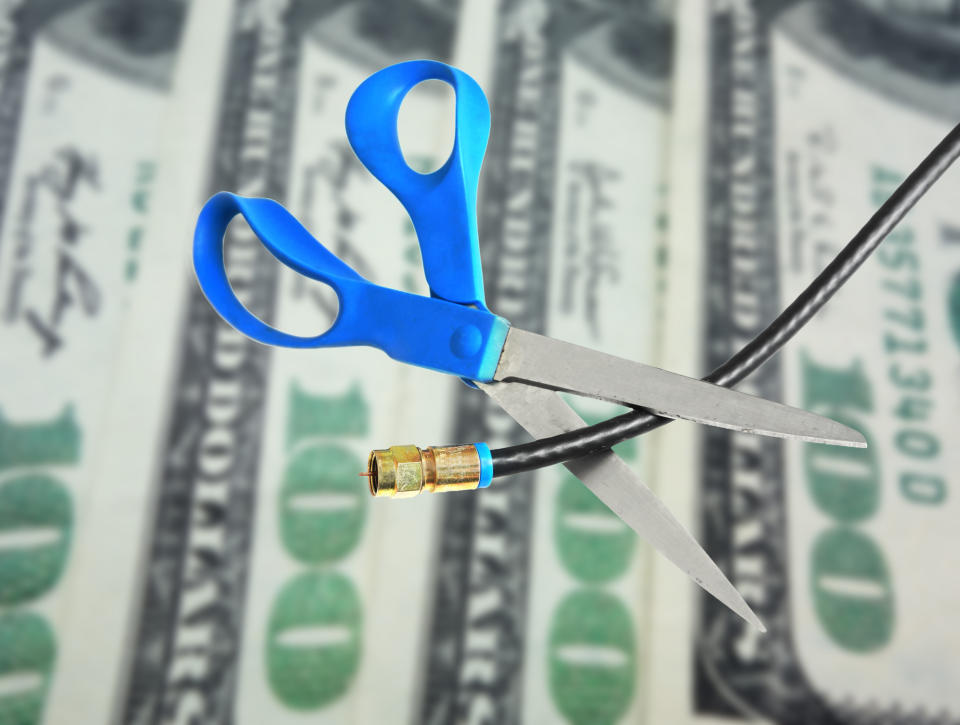Skinny Bundle Prices Just Keep Going Up
Sony (NYSE: SNE) recently announced a price hike for its live television streaming service, PlayStation Vue. Each of its four tiers will cost $5 more per month. Access is now $49.99 while Core, Elite, and Ultra were raised to $54.99, $64.99, and $84.99, respectively.
That's not necessarily a lot to pay for a multichannel live TV service, considering the average monthly cable bill runs north of $100. But PlayStation Vue was supposed to be an answer to overpriced cable and satellite bundles. From the start, the live TV streaming service market has been about undercutting cable and satellite, generally by offering "skinny bundles" -- packages that feature slimmed-down channel selections and commensurately slimmed-down prices. Yet subscription costs for skinny bundle just seem to keep creeping up, as, for that matter, do their channel counts.

Image source: Getty Images.
Same old story
Sony is hardly the first company to raise prices on a live TV streaming service. Dish's (NASDAQ: DISH) Sling TV boasts two $25-per-month bundles, but one of them used to be $20. AT&T (NYSE: T) hiked prices on DIRECTTV NOW earlier this year and Alphabet (NASDAQ: GOOG) (NASDAQ: GOOGL) raised the price of YouTube TV. So did fuboTV, which is privately owned. So did Hulu, which is majority-owned by Disney (NYSE: DIS). Philo, an ultra-skinny live TV streaming bundle that aims to undercut even its streaming peers, debuted with a $15 bundle and a $20 bundle and now it's phasing out the cheaper one.
And, just like that, I've listed every notable service in this space. Every single one of them has raised prices this year; for most, it wasn't the first hike. And these aren't typical inflation adjustments. Some of these services are less than 2 years old, none is older than 5, and the price increases have routinely been $5 and $10 per month. Typical entry-level bundles cost $40 as recently as 2017, while $50 is more typical now.
Does this model actually work?
Cable and satellite packages are hemorrhaging subscribers, and skinny bundles are, at least by some accounts, gaining them, but skinny bundle gains have been relatively meager. The most popular skinny bundle, Sling TV, had 2.4 million users at last count while cable giant Comcast has 22.3 million paying video customers.
Skinny bundles have had trouble holding onto their customers. AT&T pushed hard to make DIRECTV NOW a major player in live TV streaming, and it briefly looked like it had succeeded: Big spending on marketing helped DIRECTV NOW reach 1.6 million subscribers. It seemed inevitable that DIRECTV NOW would challenge Sling TV for skinny bundle supremacy despite the latter's head start. Then AT&T stopped spending, promotional accounts expired, and DIRECTV NOW actually lost subscribers -- something that is not supposed to happen to relatively new streaming services.
Even if they landed tons of customers, skinny bundles wouldn't necessarily become wildly profitable. After all, Google's YouTube TV was reportedly losing money on each subscriber prior to its price hike -- and after it, too!
All of this raises the question: Do skinny bundles (and live TV streaming services in general) make financial sense? They were supposed to reduce costs for consumers, but prices have only gone up. Bundles that were once fairly slim have steadily added channels, which seems counter to the whole point, but which makes plenty of sense given the economic realities of multichannel services: Small-time channels cost almost nothing to provide compared to big ones.
Perhaps that why skinny bundles keep adding relatively small-time networks and boosting their channel count; if price hikes are inevitable, there might be some value in having consumers think they are paying more because they're getting more. But the real reason for those hikes is that these services should never have been as cheap as they were in the first place.
A questionable future for multichannel TV
Live TV streaming almost certainly has a future. But that future may not necessarily look like the cable model. Cable multichannel services were born of infrastructure realities: One cable went to each house, and the company that owned the cable was the one to deal with if you wanted your TV network to reach consumers. But content producers can go direct-to-consumer now. They may choose to team up with multichannel services, but there has to be some reason for them to do so. And with low demand and rising prices in the skinny bundle space, the future hardly looks rosy for the middlemen.
More From The Motley Fool
Suzanne Frey, an executive at Alphabet, is a member of The Motley Fool's board of directors. Stephen Lovely owns shares of AT&T. The Motley Fool owns shares of and recommends Alphabet (A shares), Alphabet (C shares), and Walt Disney. The Motley Fool has a disclosure policy.
This article was originally published on Fool.com
